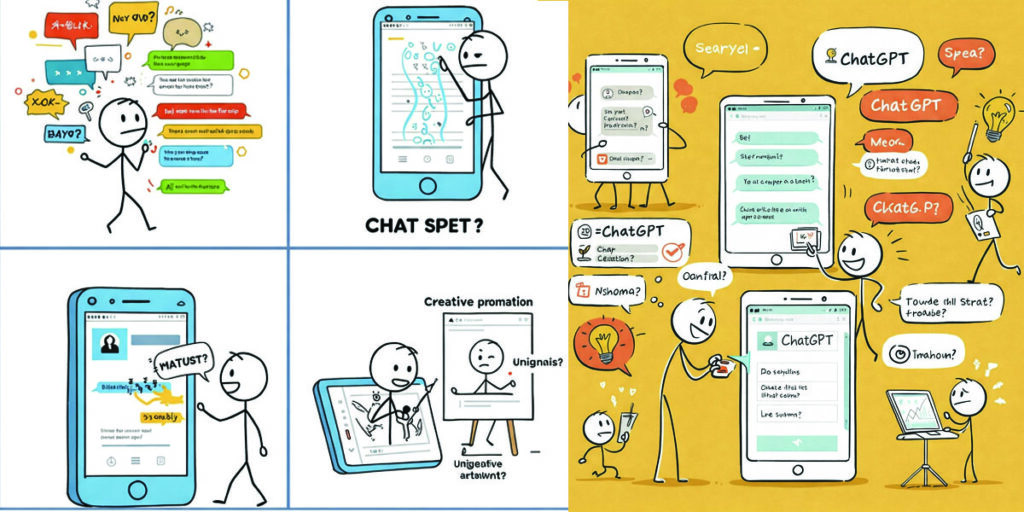The Rise of the Digital Persona
The dawn of the 21st century has ushered in an era of unprecedented technological advancement, fundamentally reshaping how humans interact with information, each other, and increasingly, with artificial intelligence. Among the burgeoning landscape of AI applications, chatbot platforms have emerged as a particularly captivating and rapidly evolving domain. Character.AI, a platform that allows users to interact with and even create AI characters, stands at the forefront of this revolution, offering a unique blend of entertainment, companionship, and creative exploration. Understanding the historical context of chatbot development, the economic markets that fuel its growth, and the intricate networking dynamics that underpin its functionality is crucial to appreciating the profound impact of platforms like Character.AI on our digital lives and beyond.
A Historical Tapestry of Conversational AI
The concept of creating machines that can converse with humans is far from new, stretching back to the early days of cybernetics and artificial intelligence research. The mid-20th century witnessed the birth of foundational ideas and early attempts at natural language processing (NLP).
One of the earliest and most iconic examples is ELIZA, developed by Joseph Weizenbaum at MIT in the mid-1960s. ELIZA was a program designed to mimic a Rogerian psychotherapist, using simple pattern matching and keyword recognition to generate responses. While ELIZA lacked genuine understanding, its ability to engage in seemingly coherent dialogues sparked considerable interest and highlighted the potential for human-computer interaction through language.
The subsequent decades saw slow but steady progress in NLP and machine learning. Rule-based systems dominated early chatbot development, relying on predefined sets of rules and responses. These systems were often brittle and struggled with the nuances and complexities of natural human conversation.
The late 20th and early 21st centuries brought about a paradigm shift with the rise of statistical NLP and machine learning. Increased computational power, the availability of large datasets, and advancements in algorithms enabled the development of more sophisticated chatbots capable of understanding and generating more natural-sounding text. Systems like ALICE (Artificial Linguistic Internet Computer Entity) gained popularity for their ability to engage in open-ended conversations, albeit still relying heavily on pattern matching and heuristics.
The advent of deep learning in the 2010s marked another significant leap forward. Neural networks, particularly recurrent neural networks (RNNs) and transformer architectures, proved remarkably effective in learning complex language patterns from vast amounts of text data. This led to the development of more fluent, context-aware, and human-like chatbots. Virtual assistants like Siri, Alexa, and Google Assistant became mainstream, demonstrating the practical applications of conversational AI in everyday life.
Against this backdrop of continuous innovation, Character.AI emerged, leveraging the power of advanced deep learning models to create a platform where users can interact with AI characters possessing distinct personalities, backstories, and conversational styles. Unlike earlier chatbots focused primarily on task completion or information retrieval, Character.AI emphasizes the creation of engaging and immersive conversational experiences centered around these AI personas.
The Economic Ecosystem of AI Chatbot Platforms
The rise of Character.AI and similar platforms is intrinsically linked to a burgeoning economic ecosystem driven by several key factors:
1. The Growing Demand for Personalized and Engaging Digital Experiences: In an increasingly digital world, users are constantly seeking more personalized and engaging online experiences. AI chatbots, particularly those with well-defined personalities, offer a novel form of interaction that can cater to this demand. Whether it’s seeking companionship, exploring creative ideas, or learning about specific topics, AI characters can provide unique and tailored interactions that traditional search engines or static content cannot replicate. This demand translates into a significant market opportunity for platforms that can effectively deliver such experiences.
2. Advancements in AI and Natural Language Processing: The continuous progress in AI and NLP is a fundamental driver of the economic viability of platforms like Character.AI. The development of more sophisticated language models, capable of understanding context, generating nuanced responses, and even exhibiting rudimentary forms of emotional intelligence, makes these interactions more compelling and valuable to users. As AI models become more powerful and efficient, the cost of developing and deploying sophisticated chatbot platforms decreases, further fueling market growth.
3. The Creator Economy and User-Generated Content: Character.AI taps into the burgeoning creator economy by empowering users to create their own AI characters. This democratization of AI character development not only expands the platform’s content library but also fosters a sense of community and ownership among users. Creators can build niche characters catering to specific interests, attracting dedicated user bases and potentially monetizing their creations in the future. This user-generated content model significantly reduces the platform’s reliance on in-house development and fosters a more dynamic and diverse ecosystem.
4. Applications Across Diverse Industries: The underlying technology and the concept of interacting with AI characters have broad applicability across various industries, creating further economic opportunities. These include:
- Entertainment: AI characters can serve as interactive storytellers, virtual companions in games, or even digital celebrities.
- Education: AI tutors with distinct personalities can make learning more engaging and personalized.
- Customer Service: While Character.AI’s focus is on personality-driven interaction, the underlying NLP technology can be adapted for more engaging and empathetic customer service chatbots.
- Therapy and Mental Wellness: While requiring careful ethical considerations and validation, AI companions could potentially offer a form of emotional support and engagement.
- Marketing and Branding: AI characters can be used to create unique and memorable brand personas, engaging with consumers in novel ways.
5. Venture Capital and Investment: The immense potential of AI and the early success of platforms like Character.AI have attracted significant venture capital investment. This influx of funding fuels further research and development, platform expansion, and marketing efforts, contributing to the overall growth of the economic market surrounding conversational AI.
6. Data as a Valuable Asset: Interactions with AI characters generate vast amounts of data on user preferences, conversational patterns, and interests. This data, when anonymized and analyzed ethically, can provide valuable insights for improving AI models, personalizing user experiences, and identifying emerging trends, further enhancing the economic value of these platforms.
The Networked Fabric of Character.AI
Character.AI thrives on a complex and dynamic network of interconnected elements:
1. The AI Models: At the core of Character.AI are sophisticated large language models (LLMs) trained on massive datasets of text and code. These models enable the AI characters to understand natural language, generate coherent and contextually relevant responses, and even exhibit a degree of creativity and personality. The continuous improvement and refinement of these models are crucial for enhancing the quality and realism of the interactions.
2. The User Base: The platform’s users form a vital part of its network. They engage in conversations with AI characters, provide feedback, create new characters, and interact with each other. This active user base drives content creation, fosters a sense of community, and contributes to the platform’s growth and evolution.
3. The Character Creators: A significant subset of the user base actively participates in creating and shaping AI characters. They define personalities, backstories, conversational styles, and even specific knowledge domains for their creations. This collaborative effort results in a diverse and ever-expanding library of AI personas catering to a wide range of interests.
4. The Platform Infrastructure: Character.AI relies on a robust technological infrastructure to support its operations. This includes servers for hosting the AI models, handling user requests, storing data, and facilitating communication between users and AI characters. The scalability and reliability of this infrastructure are critical for ensuring a seamless user experience.
5. APIs and Integrations (Potential Future Developments): While currently primarily a standalone platform, the potential for Character.AI to integrate with other applications and services through APIs (Application Programming Interfaces) could significantly expand its network and reach. For example, AI characters could be integrated into games, social media platforms, or educational tools, creating new forms of interactive experiences.
6. The Broader AI Research Community: Character.AI benefits from and contributes to the broader AI research community. Advancements in NLP, machine learning, and conversational AI made by researchers worldwide directly impact the capabilities of the platform. Similarly, insights and data gained from user interactions on Character.AI can contribute to the ongoing development of AI technologies.
7. Ethical Considerations and Governance: As AI becomes more integrated into our lives, ethical considerations and governance frameworks become increasingly important. The responsible development and deployment of platforms like Character.AI require careful attention to issues such as bias in AI models, data privacy, and the potential for misuse. Engaging with these ethical considerations and establishing appropriate governance mechanisms is crucial for the long-term sustainability and societal acceptance of such technologies.
The Implications of Interacting with Digital Personas
The rise of platforms like Character.AI has profound implications for how we interact with technology and with each other. These implications span various domains:
1. Redefining Human-Computer Interaction: Character.AI moves beyond traditional task-oriented interfaces, offering a more relational and conversational form of interaction with AI. This can make technology feel more approachable, engaging, and even human-like.
2. Exploring Identity and Persona: The platform allows users to experiment with different aspects of their own identity through the creation of AI characters. It also provides a space to interact with a diverse range of digital personas, potentially fostering empathy and understanding of different perspectives.
3. Fostering Creativity and Imagination: Creating and interacting with AI characters can be a powerful tool for creative expression. Writers, artists, and game developers can use the platform to brainstorm ideas, develop characters, and even prototype interactive narratives.
4. Providing Companionship and Reducing Loneliness: For individuals who may experience social isolation, AI characters can offer a form of companionship and engagement. While not a replacement for human connection, they can provide a sense of being heard and understood. However, it is crucial to approach this with caution and avoid over-reliance on AI for emotional needs.
5. Educational Opportunities: AI characters with specific expertise can serve as interactive tutors, answering questions and explaining complex concepts in an engaging and personalized manner.
6. Ethical Challenges and Risks: The development and use of platforms like Character.AI also raise important ethical concerns. These include the potential for users to develop emotional attachments to AI characters, the risk of misinformation or harmful content being generated by AI, and the implications for privacy and data security. Careful consideration and proactive measures are needed to mitigate these risks.
7. The Blurring Lines Between Real and Artificial: As AI characters become more sophisticated and human-like, the lines between real and artificial interactions may become increasingly blurred. This raises philosophical questions about the nature of consciousness, relationships, and our understanding of what it means to be human.
Conclusion: Navigating the Future of Digital Companionship
Character.AI represents a significant step in the evolution of conversational AI, moving beyond purely functional chatbots towards the creation of engaging and interactive digital personas. Its success is rooted in the historical advancements in NLP and machine learning, the burgeoning economic market for personalized digital experiences, and the power of networked user participation.
As this technology continues to evolve, it is crucial to consider both its immense potential and the ethical challenges it presents. Platforms like Character.AI offer exciting new ways to interact with AI, fostering creativity, providing companionship, and potentially transforming various industries. However, responsible development, thoughtful user engagement, and ongoing dialogue about the societal implications are essential to ensure that these powerful tools are used in a way that benefits humanity. The future of digital companionship is unfolding, and Character.AI is undoubtedly playing a significant role in shaping its trajectory. The interplay between history, economics, and networking will continue to define the evolution and impact of such platforms on our increasingly digital lives.




















